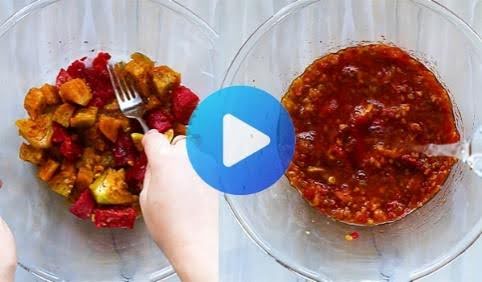Starting a new way of eating can feel like a big mountain to climb. I know because I’ve been there. The ketogenic diet, or keto for short, is one popular path people take, especially for weight loss. It changes how your body gets energy. Instead of using sugar from carbohydrates (like bread, pasta, and fruit), your body starts burning fat for fuel. This state is called ketosis. Think of it like switching your car from running on regular gas to super-efficient diesel.
Why do people, especially women, try keto? Many find it helps them lose weight without feeling hungry all the time. Fat is very filling. When you eat more healthy fats and fewer carbs, you often feel satisfied longer. This can make it easier to eat fewer calories overall. Some also notice they have more steady energy levels throughout the day, without those afternoon slumps. Others find it helps manage their blood sugar. It’s not magic, but for some, it really clicks.
Getting into ketosis requires cutting way back on carbs, eating a moderate amount of protein, and getting most of your calories from fat. It sounds technical, but I promise we can keep it simple. This plan is designed to ease you into keto without feeling overwhelmed. We’ll focus on real, whole foods and easy meals you can actually make, even if you’re not a whiz in the kitchen. Remember, this is about finding what works for your body and lifestyle.
Getting Started: Your Keto Toolkit
Before we jump into the meal plan, let’s cover the basics. Knowing what to eat and what to avoid is step one.
You Might Be Interested In: Delicious Keto Meals Tailored to Your Needs With Custom Keto Diet
What Foods Are Keto-Friendly?
Think fats, protein, and green veggies.
- Healthy Fats: These are your main energy source. Good choices include:
- Avocado and avocado oil
- Olive oil (extra virgin is great)
- Coconut oil and MCT oil
- Butter and ghee (clarified butter)
- Nuts like almonds, macadamia nuts, pecans, walnuts (in moderation)
- Seeds like chia seeds, flaxseeds, pumpkin seeds
- Fatty fish like salmon, mackerel, sardines
- Full-fat dairy like cheese, heavy cream, cream cheese (if you tolerate dairy)
- Moderate Protein: Protein helps you feel full and keeps your muscles strong. Don’t go overboard, as too much protein can sometimes kick you out of ketosis. Good sources are:
- Meat: Beef, pork, lamb
- Poultry: Chicken, turkey (dark meat often has more fat)
- Fish and Shellfish: Salmon, tuna, shrimp, cod
- Eggs: A keto superstar. Eat the whole egg.
- Tofu and Tempeh: Plant-based options.
- Low-Carb Vegetables: Focus on veggies that grow above ground.
- Leafy Greens: Spinach, kale, lettuce, arugula
- Cruciferous Veggies: Broccoli, cauliflower, Brussels sprouts, cabbage
- Others: Zucchini, bell peppers (especially green), asparagus, celery, cucumbers, mushrooms, green beans
- Fruits (in small amounts): Most fruits are too high in sugar, but berries are okay in small portions.
- Blackberries, raspberries, strawberries
What Foods Should I Avoid on Keto?
This is mostly about cutting out sugars and starches.
- Sugary Foods: Soda, juice, candy, cake, ice cream, honey, maple syrup. Read labels – sugar hides everywhere.
- Grains and Starches: Wheat, rice, pasta, bread, cereal, corn, oats, quinoa.
- Starchy Vegetables: Potatoes, sweet potatoes, peas, carrots (can be okay in very small amounts sometimes), parsnips.
- Most Fruits: Bananas, apples, oranges, grapes, mangoes – they pack a lot of sugar.
- Beans and Legumes: Lentils, chickpeas, black beans, kidney beans.
- Low-Fat Diet Products: These often have hidden sugars and carbs to make up for the lack of fat. Stick to full-fat versions.
- Unhealthy Fats: Avoid processed vegetable oils like corn oil, soybean oil, canola oil, and margarine.
Understanding Macros (Keeping it Simple)
You might hear about “macros,” which is short for macronutrients: fat, protein, and carbohydrates. On keto, the typical breakdown is something like:
- Fat: 70-75% of daily calories
- Protein: 20-25% of daily calories
- Carbohydrates: 5-10% of daily calories (usually under 20-50 grams of net carbs per day. Net carbs = total carbs minus fiber).
Don’t stress too much about hitting these numbers perfectly, especially at first. My advice? Focus on eating the right types of foods from the lists above. Choose fatty cuts of meat, cook with healthy oils, fill half your plate with low-carb veggies, and add avocado or nuts. If you do that, you’ll likely fall into the right range naturally. As you get more comfortable, you can track your macros using an app if you find it helpful, but it’s not essential for everyone starting out.
Uh Oh, The “Keto Flu”
When you first cut carbs drastically, your body needs time to adjust to using fat for fuel. During this transition (usually the first week or two), some people experience symptoms nicknamed the “keto flu.” It’s not the real flu, but you might feel:
- Tired or sluggish
- Headachy
- Irritable
- Nauseous
- Brain fog
- Muscle cramps
This happens because your body is losing water and electrolytes as your insulin levels drop. The good news? It’s usually temporary and manageable. Here’s how:
- Hydrate: Drink plenty of water throughout the day. Aim for at least half your body weight in ounces.
- Get Enough Salt: Don’t be afraid of salt. Add sea salt or pink Himalayan salt to your food. Drinking a cup of salty broth (like bone broth or bouillon) once or twice a day can work wonders.
- Boost Electrolytes: Besides sodium (salt), make sure you’re getting potassium (from avocados, spinach, mushrooms) and magnesium (from nuts, seeds, dark leafy greens). Sometimes a magnesium supplement before bed can help with sleep and cramps, but talk to your doctor first.
Be patient with yourself during this phase. It usually passes within a few days to a week.
Your Easy 7-Day Keto Meal Plan
Okay, let’s get to the food. This plan uses simple ingredients and easy cooking methods. Feel free to swap meals around, repeat ones you like, or adjust portion sizes based on your hunger. Remember to drink water throughout the day.
Day 1
Introducing: Benefits of Custom Meal Plans With Keto Diet
- Breakfast: Scrambled eggs (2-3) cooked in butter or coconut oil with a handful of spinach wilted in. Add half an avocado, sliced.
- Lunch: Tuna salad (canned tuna mixed with mayo, celery, maybe a little onion) served in large lettuce leaves instead of bread.
- Dinner: Baked Salmon (seasoned with salt, pepper, lemon juice) with roasted broccoli (tossed in olive oil, salt, pepper, and roasted until tender-crisp).
- Snack (if needed): A small handful of almonds or a few slices of cheese.
Day 2
- Breakfast: Keto Smoothie: Blend unsweetened almond milk, a scoop of low-carb protein powder (optional), a handful of spinach, 1/4 cup raspberries, and a tablespoon of chia seeds or almond butter.
- Lunch: Leftover baked salmon and roasted broccoli from last night’s dinner.
- Dinner: Bunless Burger: A beef patty (or turkey/chicken) topped with cheese, lettuce, tomato slice, onion, pickles, and mayo/mustard. Serve with a side salad with olive oil and vinegar dressing.
- Snack (if needed): Celery sticks with cream cheese.
Day 3
- Breakfast: Two hard-boiled eggs and a small handful of macadamia nuts.
- Lunch: Large salad with mixed greens, grilled chicken strips (buy pre-cooked or cook extra), cucumber, bell peppers, olives, and a creamy keto dressing (like ranch or blue cheese – check labels for sugar).
- Dinner: Pork chops (pan-fried in butter or baked) served with cauliflower mash (steamed cauliflower blended with butter, cream cheese or heavy cream, salt, and pepper).
- Snack (if needed): A few black olives or a cheese stick.
Day 4
- Breakfast: Bulletproof Coffee (optional: blend black coffee with 1 tbsp butter and 1 tbsp MCT oil or coconut oil until frothy) OR 2 slices of bacon and 1/2 avocado.
- Lunch: Leftover pork chop and cauliflower mash.
- Dinner: Chicken Stir-fry: Stir-fry sliced chicken breast or thighs with low-carb veggies like broccoli, bell peppers, mushrooms, and zucchini in sesame oil or avocado oil. Use coconut aminos or tamari (gluten-free soy sauce) instead of regular soy sauce. Top with sesame seeds.
- Snack (if needed): A small bowl of full-fat Greek yogurt (plain, unsweetened) with a few raspberries and chia seeds (check carb count).
Day 5
- Breakfast: Omelet (2-3 eggs) with cheese and chopped mushrooms, cooked in butter.
- Lunch: Chicken salad (shredded chicken mixed with mayo, celery, maybe some chopped pecans) served with cucumber slices for dipping.
- Dinner: Zucchini Noodles (“Zoodles”) with Pesto and Shrimp: Sauté shrimp in olive oil with garlic. Toss with spiralized zucchini noodles and store-bought pesto (check for low sugar/carb content). Cook gently until zoodles are tender.
- Snack (if needed): A fat bomb (many easy recipes online – usually coconut oil, nut butter, cocoa powder based) or a hard-boiled egg.
Day 6
- Breakfast: Repeat Keto Smoothie from Day 2.
- Lunch: Leftover Zoodles with Pesto and Shrimp.
- Dinner: Steak (grilled or pan-seared) with a side of creamed spinach (sautéed spinach with heavy cream, cream cheese, garlic, and parmesan).
- Snack (if needed): A small handful of pecans or walnuts.
Day 7
- Breakfast: Scrambled eggs with crumbled bacon and cheese.
- Lunch: Big Cobb Salad: Lettuce, chopped chicken or turkey, bacon bits, hard-boiled egg, avocado, tomato (small amount), blue cheese crumbles, and ranch dressing.
- Dinner: Use up leftovers or make another simple favorite like baked chicken thighs with roasted asparagus.
- Snack (if needed): Pork rinds (check label for no sugar) or string cheese.
This is just a template. Listen to your body. If you’re not hungry, don’t force yourself to eat. If you need a bigger portion, eat a bit more. The goal is sustainable eating, not rigid rules.
Super Simple Keto Recipes
Let’s break down a few of those meal ideas into easy-to-follow recipes.
1. Simple Scrambled Eggs with Avocado
- Prep time: 2 minutes
- Cook time: 5 minutes
- Serves: 1
- Ingredients:
- 2 large eggs
- 1 tablespoon butter or coconut oil
- 1 handful fresh spinach (optional)
- Salt and pepper to taste
- 1/2 medium avocado, sliced or diced
- Instructions:
- Crack the eggs into a small bowl and whisk them with a fork until the yolk and white are combined. Season with salt and pepper.
- Melt the butter or oil in a non-stick skillet over medium heat.
- If using spinach, add it to the skillet and cook for 1-2 minutes until it starts to wilt.
- Pour the whisked eggs over the spinach (or into the empty pan).
- Let the eggs set slightly around the edges, then gently push the cooked portions toward the center, tilting the pan to allow uncooked egg to flow underneath. Continue cooking and gently stirring until the eggs are cooked to your liking (I like them slightly soft).
- Slide the scrambled eggs onto a plate. Top with the sliced or diced avocado. Add more salt and pepper if needed.
2. Quick Tuna Salad Lettuce Wraps
- Prep time: 5 minutes
- Cook time: 0 minutes
- Serves: 1
- Ingredients:
- 1 can (5 oz) tuna, drained well
- 2 tablespoons mayonnaise (check for sugar-free)
- 1 celery stalk, finely chopped
- 1 tablespoon chopped red onion or scallions (optional)
- Salt and pepper to taste
- 4-6 large lettuce leaves (butter lettuce, romaine, or iceberg work well)
- Instructions:
- In a small bowl, flake the drained tuna with a fork.
- Add the mayonnaise, chopped celery, and onion (if using). Stir everything together until well combined.
- Season with salt and pepper to your taste.
- Wash and dry the lettuce leaves carefully.
- Spoon the tuna salad mixture into the center of each lettuce leaf. Fold or roll them up like a wrap or taco. Eat immediately.
3. Easy Baked Salmon with Roasted Broccoli
- Prep time: 5 minutes
- Cook time: 15-20 minutes
- Serves: 1 (easily scalable)
- Ingredients:
- 1 salmon fillet (about 4-6 oz)
- 1 cup broccoli florets
- 1 tablespoon olive oil
- Salt and pepper to taste
- 1/2 teaspoon garlic powder (optional)
- Lemon wedges for serving
- Instructions:
- Preheat your oven to 400°F (200°C). Line a baking sheet with parchment paper for easy cleanup.
- Place the broccoli florets on one side of the baking sheet. Drizzle with olive oil, sprinkle with salt, pepper, and garlic powder (if using). Toss to coat evenly.
- Place the salmon fillet on the other side of the baking sheet. You can drizzle it with a little more olive oil and season it with salt and pepper.
- Place the baking sheet in the preheated oven.
- Roast for 15-20 minutes. The cooking time depends on the thickness of your salmon fillet. It should flake easily with a fork when done. The broccoli should be tender and slightly browned at the edges.
- Serve the salmon and broccoli immediately with lemon wedges to squeeze over the fish.
4. Bunless Cheeseburger Salad
- Prep time: 10 minutes
- Cook time: 10 minutes
- Serves: 1
- Ingredients:
- 1 beef patty (or turkey/chicken/veggie burger – check carbs)
- 1 slice cheese (cheddar, provolone, swiss)
- 2 cups chopped lettuce or mixed greens
- 1/4 cup chopped tomato
- 2 tablespoons chopped red onion
- 2 tablespoons dill pickle slices, chopped
- 2 tablespoons keto-friendly dressing (like ranch, blue cheese, or a simple mix of mayo/mustard/pickle juice)
- Salt and pepper to taste
- 1 teaspoon cooking oil (like avocado or olive oil)
- Instructions:
- Heat the oil in a skillet over medium-high heat. Cook the burger patty for 4-5 minutes per side, or until cooked through to your liking.
- During the last minute of cooking, place the cheese slice on top of the patty to melt. Remove from heat.
- While the burger cooks, prepare your salad base. Place the chopped lettuce/greens in a bowl. Top with chopped tomato, red onion, and pickles.
- Once the cheeseburger patty is ready, chop it into bite-sized pieces. Add the chopped cheeseburger to the salad bowl.
- Drizzle your chosen dressing over the salad. Add salt and pepper if desired. Toss everything gently to combine. Serve immediately.
5. 5-Minute Keto Smoothie
- Prep time: 5 minutes
- Cook time: 0 minutes
- Serves: 1
- Ingredients:
- 1 cup unsweetened almond milk (or other low-carb milk like coconut milk)
- 1 scoop low-carb protein powder (optional, vanilla or unflavored works well)
- 1 large handful fresh spinach (you won’t taste it)
- 1/4 cup frozen berries (raspberries, blueberries, or strawberries)
- 1 tablespoon chia seeds or flax seeds OR 1 tablespoon almond butter/peanut butter (check for no added sugar)
- Ice cubes (optional, for thickness)
- Instructions:
- Combine all ingredients in a blender.
- Blend on high speed until smooth and creamy. If it’s too thick, add a little more almond milk or water. If it’s too thin, add a few ice cubes or more chia/flax seeds.
- Pour into a glass and enjoy immediately.
My Top Tips for Keto Success
Starting keto is one thing; sticking with it is another. Here are some tips I’ve found helpful:
- Drink Up: I mentioned hydration for the keto flu, but it’s crucial long-term too. Water helps flush out waste products from fat burning and can help you feel full. Keep a water bottle handy. Herbal tea and broth count too.
- Electrolyte Balance: Don’t underestimate this. Low electrolytes can cause fatigue, headaches, and cramps even after the initial “flu” phase. Keep salting your food (use pink or sea salt), eat potassium-rich foods like avocado and leafy greens, and consider a magnesium supplement if needed (especially if you get leg cramps at night – check with your doc). Bone broth is fantastic for sodium and other minerals.
- Meal Prep is Your Friend: Spending an hour or two on the weekend prepping can save you tons of time and stress during the week. Cook a batch of chicken breasts, hard-boil some eggs, chop veggies, make a big salad dressing, or portion out nuts and seeds for snacks. When healthy keto food is ready to grab, you’re less likely to reach for high-carb convenience items.
- Listen to Your Body: This is so important, especially for women. Our bodies and nutritional needs can change throughout the month. Pay attention to your hunger cues, energy levels, and mood. Don’t force yourself to stick rigidly to a plan if you’re feeling unwell or overly restricted. Keto should feel good long-term. Maybe you need slightly more protein one day or a few extra low-carb veggies another. It’s okay to adjust.
- Move Your Body (Gently at First): Exercise is great for overall health and can complement keto. However, when you first start, your exercise performance might dip slightly as your body adapts to using fat for fuel. Don’t push too hard initially. Focus on consistency – walking, gentle yoga, light strength training. As you become fat-adapted (usually after a few weeks), your energy for workouts often returns and may even improve.
- Eating Out Smart: Keto is possible even at restaurants. Look for grilled meats or fish. Ask for veggies (like broccoli or asparagus) instead of potatoes or rice – request they be cooked with butter or olive oil. Salads are usually a safe bet – just choose fatty proteins (chicken, steak, salmon), add avocado or cheese, and pick an oil-and-vinegar or creamy dressing (ask about sugar content or get oil and vinegar on the side). Bunless burgers are available almost everywhere now.
- To Track or Not to Track?: Some people find tracking macros and calories helpful using apps like MyFitnessPal or Carb Manager. It can teach you about the carb content of different foods. However, it can also feel obsessive or stressful for others. My advice for beginners is to focus on eating the right foods first. Once you’re comfortable, you can decide if tracking helps you fine-tune things or stay accountable. Don’t let it become a source of anxiety.
Keto Considerations for Women
While keto works similarly for everyone by shifting fuel sources, women sometimes have unique factors to consider. Our hormonal systems can be more sensitive to big dietary changes.
- Hormonal Health: Some women thrive on strict keto long-term, while others find they feel better incorporating slightly more carbs (maybe 50-75g net carbs) occasionally or cyclically (like adding some sweet potato or extra berries once or twice a week). This is highly individual. Pay attention to your cycle, energy, and mood. If things feel off after the initial adaptation phase, it might be worth experimenting slightly or talking with a knowledgeable healthcare provider.
- Thyroid Function: For a small number of people, very low-carb diets long-term might affect thyroid function. Ensuring you’re eating enough calories overall, getting adequate nutrients (like iodine and selenium), and not overly restricting is important. Again, listen to your body.
- Focus on Nutrient Density: Make sure your keto meals are packed with nutrients. Choose colorful low-carb veggies, quality protein sources, and healthy fats. Don’t just rely on bacon and butter – variety is key for getting all the vitamins and minerals you need.
- Sustainable Approach: Remember, the goal is usually long-term health and weight management, not just quick results. Find a version of low-carb or keto eating that feels sustainable and enjoyable for you. It doesn’t have to be perfect every single day.
Starting keto doesn’t have to be complicated. By focusing on whole, unprocessed foods, staying hydrated, managing electrolytes, and listening to your body’s signals, you can ease into this way of eating. This meal plan and the easy recipes give you a great starting point. Be patient with yourself, celebrate small victories, and enjoy the journey to feeling better.
Related YouTube Video
Final Thoughts
Embarking on the keto path is a personal journey. What works wonders for one person might need tweaking for another. My hope is that this guide makes the beginning stages feel less daunting and more achievable. The focus should always be on nourishing your body with real food in a way that supports your health goals and makes you feel energized and well. Don’t strive for perfection, aim for consistency and listen to the feedback your body gives you. You’ve got this.







